Visualizing real-time influenza virus infection, transmission and protection in ferrets
- PMID: 25744559
- PMCID: PMC4366512
- DOI: 10.1038/ncomms7378
Visualizing real-time influenza virus infection, transmission and protection in ferrets
Abstract
Influenza transmission efficiency in ferrets is vital for risk-assessment studies. However, the inability to monitor viral infection and transmission dynamics in real time only provides a glimpse into transmissibility. Here we exploit a replication-competent influenza reporter virus to investigate dynamics of infection/transmission in ferrets. Bioluminescent imaging of ferrets infected with A/California/04/2009 H1N1 virus (CA/09) encoding NanoLuc (NLuc) luciferase provides the first real-time snapshot of influenza infection/transmission. Luminescence in the respiratory tract and in less well-characterized extra-pulmonary sites is observed, and imaging identifies infections in animals that would have otherwise been missed by traditional methods. Finally, the reporter virus significantly increases the speed and sensitivity of virological and serological assays. Thus, bioluminescent imaging of influenza infections rapidly determines intra-host dissemination, inter-host transmission and viral load, revealing infection dynamics and pandemic potential of the virus. These results have important implications for antiviral drug susceptibility, vaccine efficacy, transmissibility and pathogenicity studies.
Figures
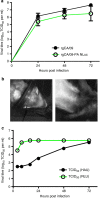
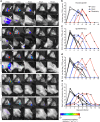
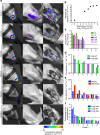
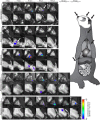
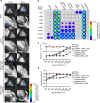
References
-
- World Health Organization. WHO Fact sheet No 211: Influenza (Seasonal) <http://www.who.int/mediacentre/factsheets/fs211/en/> (2014) .
-
- Krueger W. S. & Gray G. C. Swine influenza virus infections in man. Curr. Top. Microbiol. Immunol. 370, 201–225 (2013) . - PubMed
Publication types
MeSH terms
Substances
Grants and funding
LinkOut - more resources
Full Text Sources
Other Literature Sources

